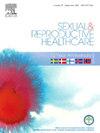多布斯事件后有色人种育龄妇女与堕胎设施的距离和抑郁症状
IF 1.7
3区 医学
Q3 PUBLIC, ENVIRONMENTAL & OCCUPATIONAL HEALTH
引用次数: 0
摘要
研究表明,在多布斯诉杰克逊妇女健康组织之后,育龄妇女的精神压力更大。然而,限制堕胎的影响可能因种族/民族身份而异。由于长期的生殖不公平,多布斯可能会加剧有色人种女性的不良心理健康状况。因此,在多布斯手术后,我们研究了距离堕胎设施越远,对有色人种育龄妇女抑郁症状的影响是否与白人妇女不同。方法根据我们的暴露情况,将到最近堕胎设施的加权距离(0 - 25,25 - 50,50 - 100,100 +英里)进行分类。对于我们的结果,我们在191,680名育龄(18-49岁)有色女性中使用了患者健康问卷-2,这是一种抑郁症状的测量方法。我们使用的调查是从2020年8月到2023年7月,来自具有全国代表性的美国人口普查家庭脉搏调查。结果我们发现,在多布斯判决后,居住在离堕胎设施最远(100英里以上)的有色人种妇女(不包括白人妇女)表现出略大的抑郁症状(Coeff: 0.10;SE: 0.04;P = 0.014)比那些住得最近的人(0-25英里)。距离堕胎设施的距离增加可能会引起身体自主权受到限制的感觉,从而降低有色人种育龄妇女的心理健康。本文章由计算机程序翻译,如有差异,请以英文原文为准。
Distance to abortion facilities and depressive symptoms among reproductive-aged women of color after Dobbs
Introduction
Studies report greater mental distress among reproductive-aged women following Dobbs v. Jackson Women’s Health Organization. The impacts of abortion restrictions, however, may differ by racial/ethnic identity. Dobbs may exacerbate adverse mental health among women of color due to longstanding reproductive injustice. We therefore examine whether greater distance to abortion facilities differentially impacts depressive symptoms among reproductive-aged women of color, relative to white women, after Dobbs.
Methods
As our exposure, we categorized weighted distance to the nearest abortion facility (0–25, 25–50, 50–100, 100 + miles). For our outcome, we use the Patient Health Questionnaire-2, a measure of depressive symptoms, among 191,680 reproductive aged (18–49) women of color. We use surveys from August 2020 – July 2023 from the nationally representative US Census Household Pulse Survey.
Results
We find that, after the Dobbs decision, women of color—but not white women—who live farthest from abortion facilities (100 + miles) show slightly greater depressive symptoms (Coeff: 0.10; SE: 0.04; p = 0.014) than those who live closest (0–25 miles).
Discussion
Increased distance to abortion facilities may invoke feelings of restricted bodily autonomy and overall disempowerment that degrade the mental health of reproductive-aged women of color.
求助全文
通过发布文献求助,成功后即可免费获取论文全文。
去求助
来源期刊

Sexual & Reproductive Healthcare
PUBLIC, ENVIRONMENTAL & OCCUPATIONAL HEALTH-
CiteScore
2.70
自引率
5.60%
发文量
73
审稿时长
45 days
 求助内容:
求助内容: 应助结果提醒方式:
应助结果提醒方式:


